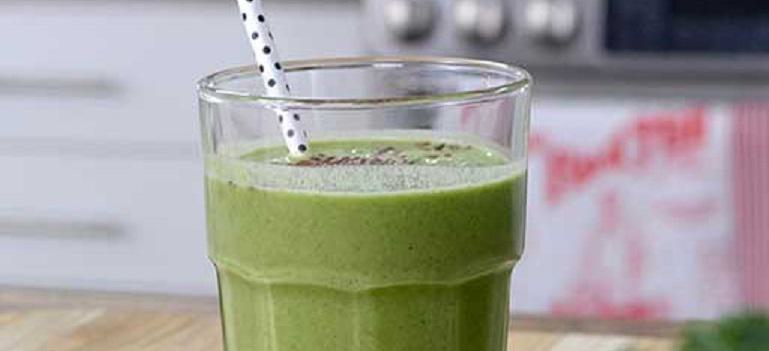


 Highlighted for its superfood qualities, you might be wondering just how good kale is for you. Let us start by saying that there are many different varieties of kale. While each variety differs slightly, the nutritional differences between each are pretty small. All kale types are extremely low in calories and high in nutrients, making them very beneficial to your health. If you're searching for a quick way to tell which kale variety carries more nutrients, taste them! Kale's nutrient profile can be determined by bitterness, meaning that the more bitter a kale leaf is, the more nutrients it's likely to have. Aside from kale's bitter flavor, the color of kale can also tell you more about its nutrients. Kale contains phytonutrients, which show themselves through the different colors of our food. Kale that is a deeper green will likely have more phytonutrients than a lighter variety. That being said, because the difference in nutrients across kale varieties isn't drastic, we wouldn't begin forcing yourself to eat bitter or deep green kale if you don't enjoy it. Adding any type of kale to your meals is sure to have health-boosting benefits.
Highlighted for its superfood qualities, you might be wondering just how good kale is for you. Let us start by saying that there are many different varieties of kale. While each variety differs slightly, the nutritional differences between each are pretty small. All kale types are extremely low in calories and high in nutrients, making them very beneficial to your health. If you're searching for a quick way to tell which kale variety carries more nutrients, taste them! Kale's nutrient profile can be determined by bitterness, meaning that the more bitter a kale leaf is, the more nutrients it's likely to have. Aside from kale's bitter flavor, the color of kale can also tell you more about its nutrients. Kale contains phytonutrients, which show themselves through the different colors of our food. Kale that is a deeper green will likely have more phytonutrients than a lighter variety. That being said, because the difference in nutrients across kale varieties isn't drastic, we wouldn't begin forcing yourself to eat bitter or deep green kale if you don't enjoy it. Adding any type of kale to your meals is sure to have health-boosting benefits.
 Kale is the ideal smoothie ingredient. Especially if you want to boost your drinks nutritional value. Because kale is mild in flavor, it can easily be combined with sweet and savory foods to create the smoothie of your dreams. The best part? When adding kale to your smoothies, you don't have to cook it at all. Once washed, raw or frozen kale can be added straight into the blender with other smoothie ingredients to create a delicious and fortifying drink that will keep you energized throughout the day.
For a healthy and tasty smoothie recipe, try making this Vanilla Kale Shake. Made with frozen kale, banana, raw cashews and our Vanilla Protein Powder Nutritional Booster, it's the perfect pick-me-up smoothie when you need a quick boost of energy.
Kale is the ideal smoothie ingredient. Especially if you want to boost your drinks nutritional value. Because kale is mild in flavor, it can easily be combined with sweet and savory foods to create the smoothie of your dreams. The best part? When adding kale to your smoothies, you don't have to cook it at all. Once washed, raw or frozen kale can be added straight into the blender with other smoothie ingredients to create a delicious and fortifying drink that will keep you energized throughout the day.
For a healthy and tasty smoothie recipe, try making this Vanilla Kale Shake. Made with frozen kale, banana, raw cashews and our Vanilla Protein Powder Nutritional Booster, it's the perfect pick-me-up smoothie when you need a quick boost of energy.
 Grain bowls are in right now, and it's no surprise why! Loaded with healthy superfoods and overflowing with flavor, grain bowls are an excellent way to meet your daily nutritional needs. Maybe you're looking for a satisfying lunch recipe that will properly fuel you for a before-dinner gym session. Or, you may be tired from an already active day and seeking a healthy and filling meal to enjoy before bed. Whatever your nutritional needs are, grain bowls are here to help meet them. When constructing the perfect grain bowl, the trick is to create the ideal texture. Choosing crunchy grains like quinoa, millet, and teff are excellent for mixing with texture adding veggies like broccoli and kale!
For a kale-filled grain bowl that will blow you away, try out this Breakfast Bulgur and Millet Grain Bowl. Savory enough to enjoy for breakfast, lunch or dinner, this grain bowl is loaded with green veggies like kale and topped with eggs for added flavor. Fresh avocado and tamari or soy sauce are then drizzled on top to take this meal from good to great!
Grain bowls are in right now, and it's no surprise why! Loaded with healthy superfoods and overflowing with flavor, grain bowls are an excellent way to meet your daily nutritional needs. Maybe you're looking for a satisfying lunch recipe that will properly fuel you for a before-dinner gym session. Or, you may be tired from an already active day and seeking a healthy and filling meal to enjoy before bed. Whatever your nutritional needs are, grain bowls are here to help meet them. When constructing the perfect grain bowl, the trick is to create the ideal texture. Choosing crunchy grains like quinoa, millet, and teff are excellent for mixing with texture adding veggies like broccoli and kale!
For a kale-filled grain bowl that will blow you away, try out this Breakfast Bulgur and Millet Grain Bowl. Savory enough to enjoy for breakfast, lunch or dinner, this grain bowl is loaded with green veggies like kale and topped with eggs for added flavor. Fresh avocado and tamari or soy sauce are then drizzled on top to take this meal from good to great!